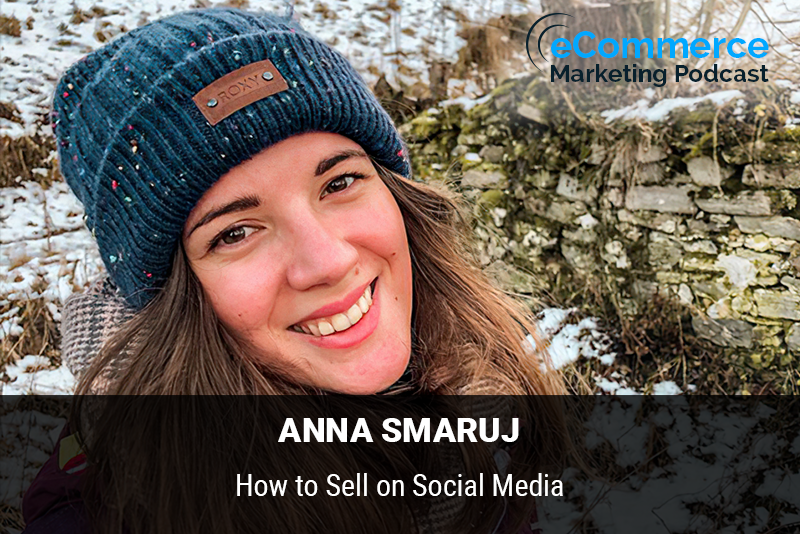
eCommerce Marketing Podcast
The eCommerce Marketing Podcast walks you through everything that goes into ecommerce marketing — from inbound marketing to paid advertising to conversions. Learn the strategies top marketing experts use to grow their businesses.
How to Sell on Social Media – with Anna Smaruj
byArlen Robinson
Marketing Strategies and Topics Covered in this Episode:
- What exactly is social selling and what are some stats from the past few years to prove that it is something every ecommerce brand should explore
- Instagram and Facebook features that enable and facilitate sales
- Common do’s and dont’s when it comes to social commerce and social selling
- Brands that have been really successful with social commerce

In this episode of the Ecommerce Marketing Podcast, host Arlen Robinson interviews Anna Smaruj, a marketing specialist at NapoleonCat, a leading social media management tool. Anna shares her insights on the power of social selling and how eCommerce businesses can effectively leverage social media platforms to boost their sales and customer engagement.
Key Takeaways:
- Introduction to Anna Smaruj and NapoleonCat (00:00:15)
- Anna’s transition from language studies to marketing.
- NapoleonCat’s focus on social media management for eCommerce.
- The Rise of Social Selling (00:03:30)
- Expected 2.14 billion online shoppers worldwide in 2021 (Statista).
- Shift towards online shopping accelerated by the pandemic.
- What is Social Selling? (00:05:00)
- Selling directly through social media platforms.
- Shortening the customer decision-making process by providing seamless purchase options.
- Key Features for Social Selling on Facebook and Instagram (00:07:45)
- Facebook Marketplace and Facebook Shop.
- Integration with Instagram for a unified shopping experience.
- Supporting Customers Across Platforms (00:11:00)
- Importance of customer service in social selling.
- NapoleonCat’s role in managing customer interactions efficiently.
- Do’s and Don’ts of Social Selling (00:14:00)
- Do leverage available tools like Facebook Shop and Instagram tagging.
- Don’t ignore the potential of social selling by neglecting these tools.
- Research competitors for best practices and adapt strategies accordingly.
- Successful Brands in Social Selling (00:18:00)
- Examples of successful brands like Nike and New Balance.
- Engaging with customers through Instagram stories, polls, and interactive content.
- Enhancing Customer Engagement (00:21:30)
- Using tools to respond instantly to customer inquiries.
- Importance of immediate and personalized customer service.
Bullet Points of Key Takeaways with Timestamps:
- [00:00:15] Introduction to Anna Smaruj and NapoleonCat.
- [00:03:30] Rise of online shopping and the impact of the pandemic.
- [00:05:00] Explanation of social selling and its benefits.
- [00:07:45] Key features for social selling on Facebook and Instagram.
- [00:11:00] Managing customer service across social platforms with NapoleonCat.
- [00:14:00] Do’s and Don’ts of social selling.
- [00:18:00] Examples of successful social selling brands.
- [00:21:30] Enhancing customer engagement and service responsiveness.
Guest Information:
Anna Smaruj
- Marketing Specialist at NapoleonCat
- LinkedIn: Anna Smaruj











